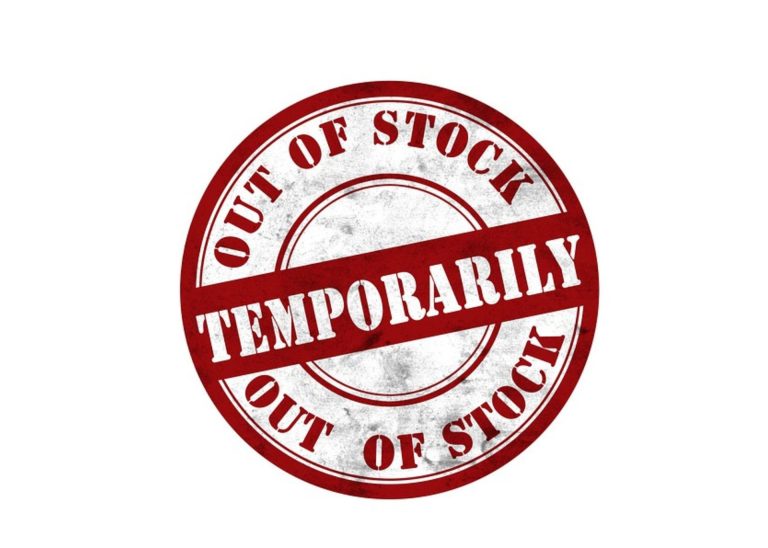How to manage out-of-stock items on your Shopify
or Shopify Plus store without upsetting your customers
or driving (Google) crazy
if you own an eCommerce company, there’s a good possibility that your inventory has been negatively impacted by supply chain problems. It is difficult to keep in stock popular products due to widespread shortages and price increases, according to numerous Shopify store owners. What are Shopify store owners to do with all those product pages and URLs that are perpetually out of stock, then?
Many business owners believe that the solution is to archive or delete the outdated pages, however the abrupt removal of a page or URL can have a significant detrimental effect on search engine rankings.
It’s possible that another website mentioned or linked to your product page or that it was bookmarked, pinned, shared on social media, etc. We have lots of other possibilities, so we don’t want to waste any of that link juice by abruptly deleting a page.
Deleting pages results in 404 errors, Google penalties, and angry consumers.
This post will teach you a few various approaches to handling out-of-stock SKUs and safeguarding your website from the dreaded 404 error on your eCommerce site by using its tools, settings, and add-ons.

Step 1: Easily set the item quantity to zero.[simple]
The first and most crucial action to do when a product runs out of stock is to set the quantity still available to zero. Most Shopify themes will automatically add a “Sold Out” badge to the front end of your page when an item’s quantity is set to zero.
Note: A Shopify Plus developer can assist you with customising your site’s badges and zero quantity behaviours if your Shopify theme doesn’t show the Sold Out badge.
Step 2: Remove the page from the site navigation.[simple]
The collections, categories, and tags offered by Shopify’s product organisation features make it simpler for customers to locate the goods they need on your website. The page is eliminated from the site’s navigation menus when the Product Organisation settings for the page are deleted.
Create an archives collection to house out-of-date and out-of-stock listings if your store has a continually changing inventory and a large number of zero-quantity items.
The archives collection shouldn’t be part of the main site navigation, in contrast to your other collections. Your archives collection should only be used for zero quantity goods that you don’t want your customers to see and should be hidden from the site navigation.
Simply take an item out of any active collections when it sells out and then add it to your archives.
Step 3. Add a “flag” to the page title [simple]
Adding a “flag” to the page title that informs readers of the status of a certain item is one reliable approach to let users know if a product is out of stock. The ideal way to flag a listing is to add a separator, such as a bullet, a pipe, or an em-dash, then the words OUT OF STOCK, SOLD OUT, or whatever suits your brand the best.
We have prevented our discontinued item page from showing up in the site search and on-site navigation menus by following the first three procedures. But doing so is only half the battle; our pages must still remain in the site navigation. We’ll then go through how to prevent our archived pages from appearing in search results while maintaining search engine rankings.
Step 4: Hiding out-of-stock items from collections [intermediate]
There is a straightforward configuration that will conceal zero-quantity products from visible Collections if your Shopify or Shopify Plus store uses Collections to display products. But keep in mind that only site visitors can hide a product from Collections.
Note: In Step 5 of this article, we discuss how Products hidden from Collections can still appear in Google searches.
*You must activate inventory tracking in Shopify admin before you can conceal out-of-stock items from your Shopify Collections.
Activate inventory monitoring
Next, access your conditions menu and include the subsequent automated conditions there.
Select all conditions under Products must match.
Enter 0 for the Stock Stock field and choose “is greater than”
press “save”
The quantity of a product will now be immediately hidden from Collections when you modify it to zero.
Step 5: To prevent Google from crawling out-of-date pages,
use the robots.txt file [intermediate].
The public_html subdirectory of most websites has a basic text file called a robots.txt. In order to determine which pages and sections of a website should (and should not) be scanned, search engine crawlers consult the robots.txt file. In search results, pages that cannot be crawled won’t be displayed. We can manage which pages will and won’t appear in search results by adding forbidden command lines.
Here is an illustration of a personalised robots.txt file. Note the command lines for Allow and Disallow. You can easily build a disallow command for any page you want to removefrom search results by using the syntax shown below:
Userland Agent: *
[Example] Allow: / Disallow: /admin-login
/out-of-stock-product-url-1 is not permitted.
/out-of-stock-product-url-2 is not permitted.
/out-of-stock-product-url-3 is not permitted.
Pro Tip: The robots.txt file on your website may be easily changed using the file editor tool provided by SEO plugins and add-ons like Yoast SEO. All you need to do is add a “disallow” line for each live page you wish to be excluded from search results once you’ve found the robots.txt file editor tool.
Step 6: Help Google and other search engines “understand”
your webpages by using JSON Schema markup [advanced]
Structured data, commonly referred to as schema markup, is a type of computer coding that improves how well search engines “understand” the content on your website. A extremely effective technology that offers us tremendous control over how a website appears in search results (or if it even appears in results at all) is schema markup.
You may manually create and test schema markup using the tools on Schema.org or Google’s structured data toolkit, or you can use an SEO plugin like Yoast SEO or Smart SEO to generate it for you.
For eCommerce websites and product pages, there exist a specific set of schema designations. The product availability (available, back ordered, discontinued), status (in stock, out of stock), aggregated ratings (⭐⭐⭐⭐⭐), and other customization choices are all included in the eCommerce product schema.
Step 7: Trying to find a quicker fix? Utilise an add-on. [easy]
You can think about experimenting with a paid add-on made to conceal your out-of-stock inventory from customers if you’re searching for an immediate fix for zero quantity goods in your Shopify or Shopify Plus store. Depending on the sort of membership you choose, you may anticipate paying somewhere between $5 and $10 per month for the add-ons.
Contact us today to learn more about what WizeSaaS can do for your company and to learn more about bespoke Shopify or Shopify Plus development, JSON structured data implementation, customising your robots.txt file, and other SEO services for your eCommerce website.

